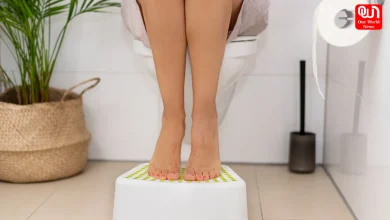Understanding the Side Effects of Using Mehendi on Your Hair
at the same time as Mehendi is generally safe for use on hair, it is crucial to be privy to potential side results and take precautions to reduce risks.
Side effects of using Mehendi on your hair
Mehendi, additionally referred to as henna, has been used for centuries as a herbal hair dye and conditioner, loved for its colorful coloration and nourishing effects. While Mehendi is generally considered secure for use on hair, it is important to be aware about potential side effects which could arise from unsuitable allergies. Here’s a closer take a look at the side effects of using Mehendi for your hair:
1.Allergic Reactions:
One of the usual side outcomes of the use of Mehendi on hair is allergies. Some people may also suffer itching, redness, or swelling of the scalp rapidly after applying Mehendi. This hypersensitive reaction is usually as a result of the presence of para-phenylenediamine (PPD) in Mehendi products. PPD is a chemical compound commonly delivered to black henna to intensify coloration but can reason intense hypersensitive reactions in people. To minimize the chance of hypersensitive reactions, it’s important to perform a patch check before the usage of Mehendi and opt for herbal, PPD-unfastened formulations.
Read More – Unlocking the Power of Rice Water for Skincare: Expert Shares Benefits
2.Dryness and Frizz:
While Mehendi is known for its conditioning homes, excessive use or improper application can lead to dryness and frizz. Mehendi works via coating the hair , sealing in moisture, and supplying a protective barrier towards environmental harm. However, if carried out too often or left on for extended durations, Mehendi can strip the hair of its natural oils, leading to dryness and frizz. To save you dryness, it’s critical to balance Mehendi remedies with everyday deep conditioning and moisturizing remedies.
3.Hair Texture Changes:
Some individuals may additionally observe changes of their hair texture after the use of Mehendi frequently. While Mehendi is normally considered safe for all hair types, it can regulate the texture of chemically handled or damaged hair. Mehendi coats the hair, adding thickness and quantity, which may result in a slightly hard texture. Additionally, repeated Mehndi usage may additionally cause buildup on the hair, making it stiff. To maintain hair health and texture, it is crucial to use Mehendi often and contain normal clarifying remedies into your hair care routine.
Read More – Shield Your Skin: 7 Best Sunscreen Body Lotions to Prevent Sun Damage
4.Scalp Irritation:
In uncommon instances, the use of Mehendi at the hair may additionally reason scalp infection or irritation. This inflammation may additionally take place as redness, itching, or burning sensations on the scalp. Scalp infection may be caused by an allergy to Mehendi ingredients or by means of leaving the product on for too long. To reduce the threat of scalp irritation, it is important to observe the manufacturer’s commands for utility and avoid leaving Mehendi on for longer than recommended. Additionally, the usage of herbal, natural Mehendi formulations can help lessen the chance of scalp irritation.
6. Sensitivity to Sunlight:
Some people can also experience increased sensitivity to daylight after the use of Mehendi on their hair. Mehendi incorporates compounds that may react with UV radiation, leading to phototoxic reactions in some people. These reactions may additionally happen as sunburn-like symptoms, consisting of redness, itching, and blistering of the scalp. To defend against sun sensitivity, it’s crucial to wear a hat or headscarf while exposed to sunlight after the use of Mehendi at the hair. Additionally, the usage of sunscreen or sun-defensive hair merchandise can help limit the risk of sun-related reactions.
In the end, at the same time as Mehendi is generally safe for use on hair, it is crucial to be privy to potential side results and take precautions to reduce risks. By acting a patch, taking a look at, using herbal formulations, and following right utility techniques, you could experience the advantages of Mehendi whilst minimizing the likelihood of detrimental reactions. If you experience any intense or chronic side effects after the use of Mehendi, it is vital to stop use and seek advice from a dermatologist for similar evaluation and treatment.
Like this post?
Register at One World News to never miss out on videos, celeb interviews, and best reads.








